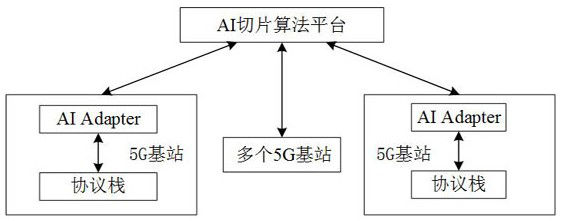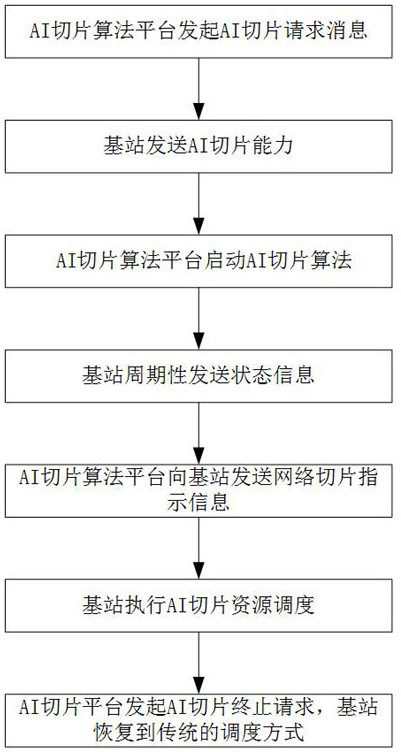Artificial intelligence-based network slice management system and method on the ran side
A network slicing and artificial intelligence technology, applied in network traffic/resource management, wireless communication, electrical components, etc., can solve the problems of joint management and optimization of network resources without considering multiple base stations, difficult to achieve, and no artificial intelligence algorithm, etc. Achieve the effect of improving overall utilization, meeting deployment requirements, and convenient and quick deployment
- Summary
- Abstract
- Description
- Claims
- Application Information
AI Technical Summary
Problems solved by technology
Method used
Image
Examples
Embodiment approach
[0063] In the step S3, the AI slicing algorithm platform receives the AI slicing capability message of the base station within the validity period of the timer Treq, and performs corresponding operations according to the information in the AI slicing capability message. As one of the implementation methods, it is specifically implemented through the following sub-steps:
[0064] S3.1: The AI slicing algorithm platform verifies the AI slicing capability message. If the AI support / deny flag in the AI slicing capability message is a rejection flag, it is considered that the base station does not support the AI slicing algorithm. The process ends and there is no follow-up S4, S5, S6 and S7. At this time, the base station still adopts the traditional non-AI network slice scheduling method; if the AI support / rejection flag in the AI slice capability message is a support flag, and the maximum number of slices SliceNum_max supported at the same time is not 0, the AI...
PUM
 Login to View More
Login to View More Abstract
Description
Claims
Application Information
 Login to View More
Login to View More - R&D
- Intellectual Property
- Life Sciences
- Materials
- Tech Scout
- Unparalleled Data Quality
- Higher Quality Content
- 60% Fewer Hallucinations
Browse by: Latest US Patents, China's latest patents, Technical Efficacy Thesaurus, Application Domain, Technology Topic, Popular Technical Reports.
© 2025 PatSnap. All rights reserved.Legal|Privacy policy|Modern Slavery Act Transparency Statement|Sitemap|About US| Contact US: help@patsnap.com


